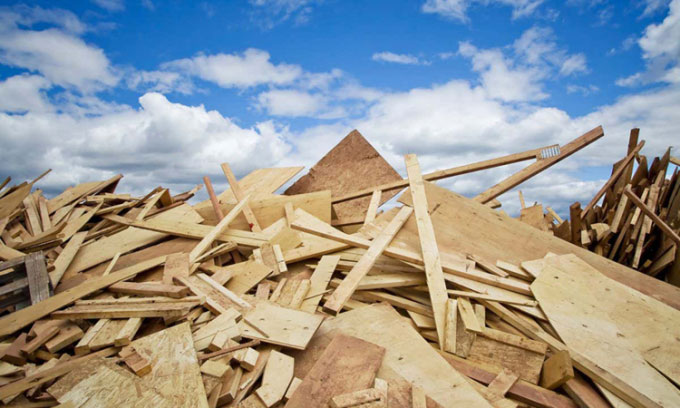New technique helps recycle wood into stronger material than steel
Orlando Rojas, an expert at the University of British Columbia, Canada, and colleagues found a new way to recycle wood into a material that is five times stronger than natural wood and can be made from any wood by-product, including both shavings and sawdust. The new study was published in the journal Nature on May 19.

Waste wood can be recycled into new materials with some properties better than natural wood.
Wood is an incredibly versatile material, yet millions of tons end up in landfills each year. To build a truly circular economy, wood needs to be reused on a larger scale.
Rojas' team devised a way to dissolve lignin - the glue-like ingredient inside plant cell walls - and expose cellulose nanofibers - tiny fibers that are also found in plant cell walls. The new method requires a solvent called dimethylacetamide, which is used together with dimethylacetamide.
When two pieces of treated wood are combined, the nanofibers bond to create a recycled material the team calls "healing wood". Although it no longer looks like natural wood, the new material possesses better mechanical properties. Tests show it to be more resistant to fracture than stainless steel or titanium alloys.
"We recorded mechanical strength beyond the starting material. The reason is that we used the inherent properties of cellulose, which holds together very firmly thanks to hydrogen bonding," says Rojas.
The University of British Columbia method helps recycle wood to create new objects. Not only that, the treatment process can also be repeated on the same piece of wood to prolong the life of the wood.
"This is a really sophisticated way to heal wood, using a common cellulose solvent, restoring and enhancing the mechanical properties of natural materials. The method is certainly scalable and The challenge is to take it to the next level," said Steve Eichhorn, an expert at the University of Bristol, UK.
The team has not examined how much the new method would cost if scaled up to an industrial scale. "The processes we use are very typical in the woodworking industry. So scaling won't be an issue," says Rojas.
- Hardwoods like steel can prevent bullets
- MIT team creates materials that are lighter than plastic and stronger than steel
- This is why fragile spider silk is 5 times stronger than steel
- Spider silk may have springs or rubber properties
- Japan prepares to have the tallest wooden skyscraper in the world
- Unique spiral tower made of wood in the world first
- Steel 3D prints stainless and is more resistant to ordinary steel
- Successfully fabricated 'hydrogel' fabric, five times stronger than steel
- This new material will help us light up the house without using electricity
- Successfully made durable glass material, but made from wood
- The house is made of 3D wood in the future
- Elastic cord made of material more durable than steel 200 times
 'Barefoot engineer' invents a pipeless pump
'Barefoot engineer' invents a pipeless pump Process of handling dead pigs due to disease
Process of handling dead pigs due to disease Radiometer
Radiometer Warp Engine: Technology brings us closer to the speed of light
Warp Engine: Technology brings us closer to the speed of light